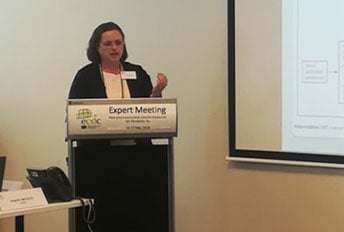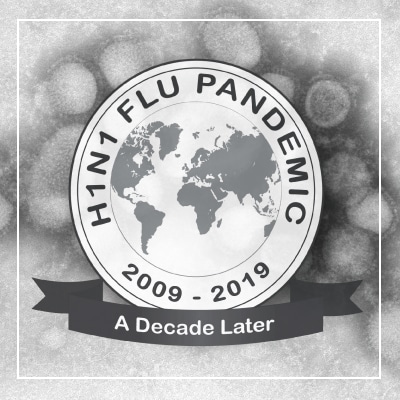Flu Fighter: Dr. Amra Uzicanin, MD, MPH
As Lead of CDC’s Community Interventions for Infection Control Unit (CI-ICU) within the Division of Global Migration and Quarantine, Dr. Amra Uzicanin is dedicated to developing the scientific evidence base and policies for use of nonpharmaceutical interventions (NPIs), for infectious disease control in community settings with a focus on pandemic flu. NPIs, also known as community mitigation measures, are the first line of defense to help slow the spread of pandemic influenza (flu). NPIs are readily available everywhere and can be used before a pandemic vaccine is available. CI-ICU works hard to prevent and reduce the spread of infectious diseases in communities by empowering people and communities to take action grounded in evidence-based knowledge of NPIs. Dr. Uzicanin says the 1918 flu pandemic “was a pandemic where ordinary people and communities as well as government authorities, public health officials, and healthcare professionals were striving to find new ways to fight off the flu and prevent its impact worldwide.”
Being a Flu Fighter
As lead of the Community Interventions for CI-ICU within the Division of Global Migration and Quarantine (DGMQ), Dr. Amra Uzicanin oversees the research portfolio on evaluating the feasibility, acceptability, and effectiveness of different NPIs that may be implemented during a pandemic. “As a unit, we work to summarize the best available evidence and prepare pre-pandemic guidelines such as the Community Mitigation Guidelines and six Pre-Pandemic NPI Planning Guides released last year,” says Dr. Uzicanin.
Why the 1918 Pandemic Still Matters
“The 1918 pandemic was a pandemic of epic proportions. Not only was it a novel virus, but it was almost an equal opportunity killer. It made many people sick, and many children, young adults, and the elderly died,” says Dr. Uzicanin. She highlighted that the pandemic was a dramatic event because it affected everybody worldwide. “Many people were trying everything they could think of that could help,” says Dr. Uzicanin. “The 1918 pandemic was also a great teacher. It left us with a legacy of community mitigation measures and historical records of when, where, and how these measures were implemented,” says Dr. Uzicanin.
Retrospective studies conducted in modern times using the 1918 data have documented that these community mitigation measures were impactful. “So many people were able to defend themselves and reduce mortality by implementing community mitigation,” says Dr. Uzicanin. Some communities were more proactive at implementing their mitigation. Those who were late or more relaxed in implementing the measures had a greater mortality rate in that community. “The 1918 pandemic gave us a toolbox of ideas of what worked or didn’t work that we could use to reduce morbidity and mortality during a future pandemic,” says Dr. Uzicanin.
Planning and Preparation are Critical; Challenges Remain
Community mitigation NPIs are measures that are available to all people and all communities at all times. “Because pandemics are inherently unpredictable in terms of timing, where they might emerge, and how they might evolve, we have to be prepared,” says Dr. Uzicanin. Simple measures like NPIs can help slow the transmission of disease from person to person and from community to community. “Our ancestors one hundred years ago were able to defend themselves and their families using a series of simple measures, and, in the 21st century, we, too, can figure out how to prepare for use of these same types of measures by adjusting them to modern circumstances,” says Dr. Uzicanin.



